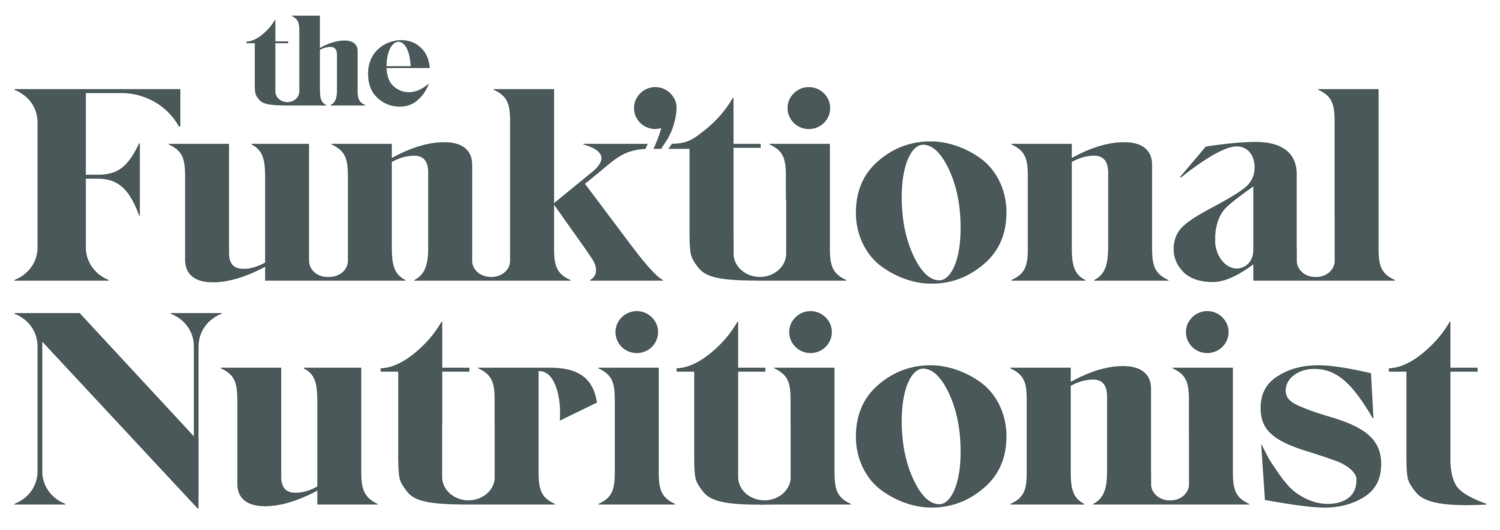My Thoughts on Calorie Counting, Food Portioning & Food Tracking
Seeing as I’m a functional nutritionist, I’m sure it comes as no surprise that I often get asked about diets. Under the “diet umbrella” comes inquiries about calorie counting, food portioning, and food tracking.
Based on what I’ve seen with online group nutrition program participants, individual clients, and my own food transformation, I’ve formed a pretty strong opinion of the above topics. Today I will share them with you.
First: I understand that there’s more than one way to skin a cat, that there’s different strokes for different folks, and what’s good for the goose may not be good for the gander…am I getting off track with my proverbs here…? Point being, I’m all for doing whatever makes you feel good, and that is going to look a little bit different for everyone.
However: I’ve also been witness to much diet and food neuroticism. And I do feel that it’s part of my work’s mission to dissolve some of the craziness around food. So here we go! Let’s define what I’m talking about.
Calorie Counting
Eating based on the number of calories in a food.
Portion Control
Measuring out food using scales, special containers or measuring cups.
Food Tracking
Logging food into a database or journal.
Portion control, food tracking and point systems are all used for the purpose of tracking calories and/or macronutrients. These are very common practices, often taught by professionals.
Some personal examples:
Around age thirteen, my family became concerned about my weight: I had lost a significant amount of it, and I was growing more restrictive with my food, more controlling with my exercise. My mom took me to a see a dietitian. The only thing I remember about that meeting was the RD pulling out plastic bowls and fake plastic molds of pasta to show me what “proper portions” should look like. And I remember thinking, “Really? This is your mode of intervention? Showing a growing teenage girl with restrictive eating patterns how to further restrict herself?”
It’s a wonder I ever went into this field. But go into this field I did, only to be met with stories like this:
I had a client who was following the nutrition advice of her personal trainer. He had her logging everything she ate into My Fitness Pal, an online food tracking system.
(Side note here: if you’ve ever logged your food, you know how tedious it is to enter real food—these tracking systems almost encourage the consumption of processed food, as every packaged food under the sun can be easily found, whereas entering a homemade smoothie with fruit, almond milk and baby spinach takes some time.) This client came to me because she wanted to eat better and lose weight. She had been tracking her food for years—she had stayed well within the caloric guidelines her trainer had mapped out, but wasn’t reaching her goals. Even after several sessions with me, she had a hard time letting go of her food tracking. She was fearful of losing control, but the very thing she was doing to maintain control was holding her back from reaching her health goals.
Why are we doing this?
Proponents argue that portioning out food/calorie counting/tracking food shows us the “right” way to eat (sometimes after years of doing the “wrong” thing); that this is how we learn.
But is it really? Does it really teach us how to eat?
I’d say no. That these diet tactics don’t teach us anything, because we’re looking outside ourselves on what to eat. We’re letting arbitrary numbers dictate what and how much we eat, instead of our own hunger.
I’d instead suggest that we need to learn how to tap into our body’s needs and desires, without the use of props.
We need to acknowledge and trust our feelings of hunger, instead of fearing them. We need to get back in touch with our body’s natural regulations, so we eat when we are hungry and we stop eating when we are full.
For years we’ve turned off these signals with calorie restriction, and other forms of dieting and food control. Unfortunately, focusing on the numbers and the portions alone actually tunes you OUT from your body’s signals.
So doing the opposite—eating foods that are nutritious (real food) and satiating (real fat, ample calories), foods that are NOT overly stimulating (read: fake diet foods)—tunes up back in. You’ll eventually learn to eat when you are hungry and stop when you are full.
Tuning back in takes time and it takes TRUST in your body. And I think that’s the bigger issue at play here. We don’t trust ourselves. We’ve been taught for years not to.
We hear it all the time through the media: You are not to be trusted with food! The infamous “Bet you can’t eat just one” slogan. 100 calorie packs—because you’re not to be trusted with the whole box, we have to pre-portion it for you! Even the term “portion control” implies that YOU NEED TO BE CONTROLLED when it comes to food.
And guess what? Your body LISTENS to the messages you tell it. So let's give it some good stuff. Let’s get back to a place of self trust. A place where you can eat without props. A place where your body trumps your food containers.
Dieting props should be used for training wheels AT BEST. While for some people they may be helpful for short term rough guidelines, I have found that this approach does not work for the majority of people for longterm success.
Let me be clear: If weight loss is your goal, these tactics will most likely work IN THE BEGINNING. You will most likely see success at the start of any major food program. Losing weight can be easy. Maintaining weight loss is the real challenge. Losing weight can be accomplished with external forces—diets, new exercise programs, calorie counting, portioning out food in containers, logging food into a daily platform. But what happens 3 months down the road, or 6 months, or 3 years later?
Ask yourself: Is your eating plan sustainable to you? Meaning, can you keep it up? Will you always be counting calories? Will you always be portioning out your food? Will you always be logging every morsel of food into an online data base? Like…forever? If this feels good and right, then keep at it. If not, then maybe it's time to take off the training wheels.
Keeping the weight off must come from INSIDE. Making food/weight/life changes must come from inner guidance, not outer restraints.
Last week I happened to catch Khloe Kardashian on Live! with Kelly and Michael (don’t judge). I was pumped that I got to see her segment, because I loved that she put forth this honest and true message:
“
For me, it’s about lifestyle changes. I’ve dieted forever. I’m a yo-yo dieter, yo-yo weight gainer, and I was like, okay. I need to make a change. It’s not about losing 30 pounds in 30 days, that’s unrealistic. So I started making lifestyle changes…I started slow. It’s been 3 years and I’ve kept the weight off…I’ve lost about 40 pounds, but over 3 years.
LASTING CHANGE comes from figuring out what works for you. You have to get still, listen to your body, and respond accordingly. It can take a long time to release our food fears and undo the programming we’ve received. Give yourself the time and space to relearn your body’s signals and regain your self trust. Be patient with yourself as you make big changes.
Ditch the diets, let go of the props.
End the restriction, eat real food. Trust your body, trust yourself.


